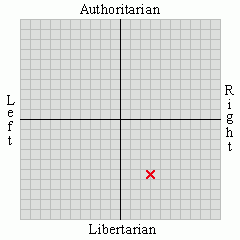From How To Be A Retronaut, a Disney movie from 1958, The Magic Highway:
It's now more than fifty years since the animated film here. It was broadcast on a television program; I can't find evidence as to whether it was shown at Disney Land in an exhibit at Tommorowland or not.
A couple of things stand out for me. Perhaps the most interesting thing is the style of the art in the movie; the stylized images and the music still retain their distinctive style. I rather enjoy those. I probably wouldn't listen to the jazzy orchestral music for recreation, but in context, it's perfect.
To be sure, some of the ideas in the movie seem silly with the benefit of hindsight; the idea of atomic-powered cars now seems risible in its irresponsibility. But of course the point of the movie was not to say what would happen but rather to generate wide-eyed wonder at what could happen. The movie is about possibilities.
And some of them are still good ideas -- the unified emergency-response vehicle, combining police, paramedic, and vehicular cleanup and repair services would still be a good idea today. Especially if it could fly over traffic, although I'm not going to be the be first or last person to (facetiously) whine that Disney promised us flying cars by the 21st century and we still don't have them.
It's relatively uninteresting to me that most of the movie's fanciful predictions haven't come true. Of course they haven't and I doubt that the producers of the movie would have believed that even a quarter of what they were illustrating would ever become reality even at the time they were making it. Predicting the future is highly speculative.
What is interesting, though, is what the movie reveals about the ethics of its makers, abut the ethics of the late 1950's when they made the movie. The most profound expression of values that comes out of the movie is faith in the ability of technology to endlessly improve the quality of life. Better highways, better cars to travel on them, and perhaps most of all the panacea of television, will make us all richer, give us all more leisure time, and literally lead to world peace.
The second thing that stands out for me is the utter disregard for economic limits and environmental degradation. The idea that preserving the natural beauty of all the canyons, mountains, cliffs, seashores, and open spaces is something that possesses value never even entered the brains of anyone involved in the project. It doesn't matter what the mountain looks like with a tubular highway running across it at improbable angles, since the only time anyone is going to look at the mountain will be from their super-cars within the highway in the first place. And despite the expansion of core cities into "vast urban spaces," there is no thought at all that there is only so much space left over for the agricultural areas that will be needed to generate the food which all these people will eat.
And third, social roles remain totally unchanged from the late 1950's. Notice that Father goes to work and is apparently the sole breadwinner for the family providing all the income necessary for an affluent and comfortable lifestyle. Meanwhile, Mother takes care of the son and goes shopping; her primary jobs are childrearing and homemaking. Notice that Father is the one who "drives," meaning he's the one who programs the car to do what its sophisticated electronics will do. Notice that Father sits up front while Mother and children enjoy the leisure activities available in the remainder of the vehicle, Father joins them except when driving duties take over.
The threshold of 2011 is a very different world than what the producers of this film envisioned in 1958 (of course). But the most important differences between then and now are not the technological ones. The advance of time has changed the way we think, and the gee-whiz factor of the technology we do have -- which would have seemed as miraculous to the residents of 1958 as the miracles in the movie -- is the result of both the real scientific and technological advances between then and now, more importantly the product of the kinds of tools we demand to do the things that are really important to us, and most importantly a function of the kinds of limits and challenges that we actually face.
The naïveté of the movie is not in its gee-whiz vision of super-cars, magic highways, and benevolently omnipresent televisions. While those are charming, the real lesson here is that economics drives innovation, and not just technological innovations but also in the way we think, in our ethics and social arrangements and the areas in which we choose to place effort to innovate further. It is in the assumption that technology would eliminate functionally all the economic limits of life. If that prediction of the movie had come true, its prediction that social roles would freeze to be what they had been in 1958 might also have been accurate.
December 8, 2010
Subscribe to:
Post Comments (Atom)







1 comment:
I'm a HUGE fan of Disney's future-planning projects. Tomorrowland remains my favorite part of Disney World for that reason and there are places you can go there and see Disney's models for planned communities of the future.
I actually saw a lot of ideas in the video that have come about or lie just over the horizon. For example, they talk about dad video conferencing from the family video. Not a big step from the teleconferences I have regularly for my job and if everyone was armed with an iPod or iPad it's basically a reality. The ocean highway was achieved with the chunnel (we can debate it's utility).
I agree with you that the visual style of these videos is charming and remains fresh.
Post a Comment